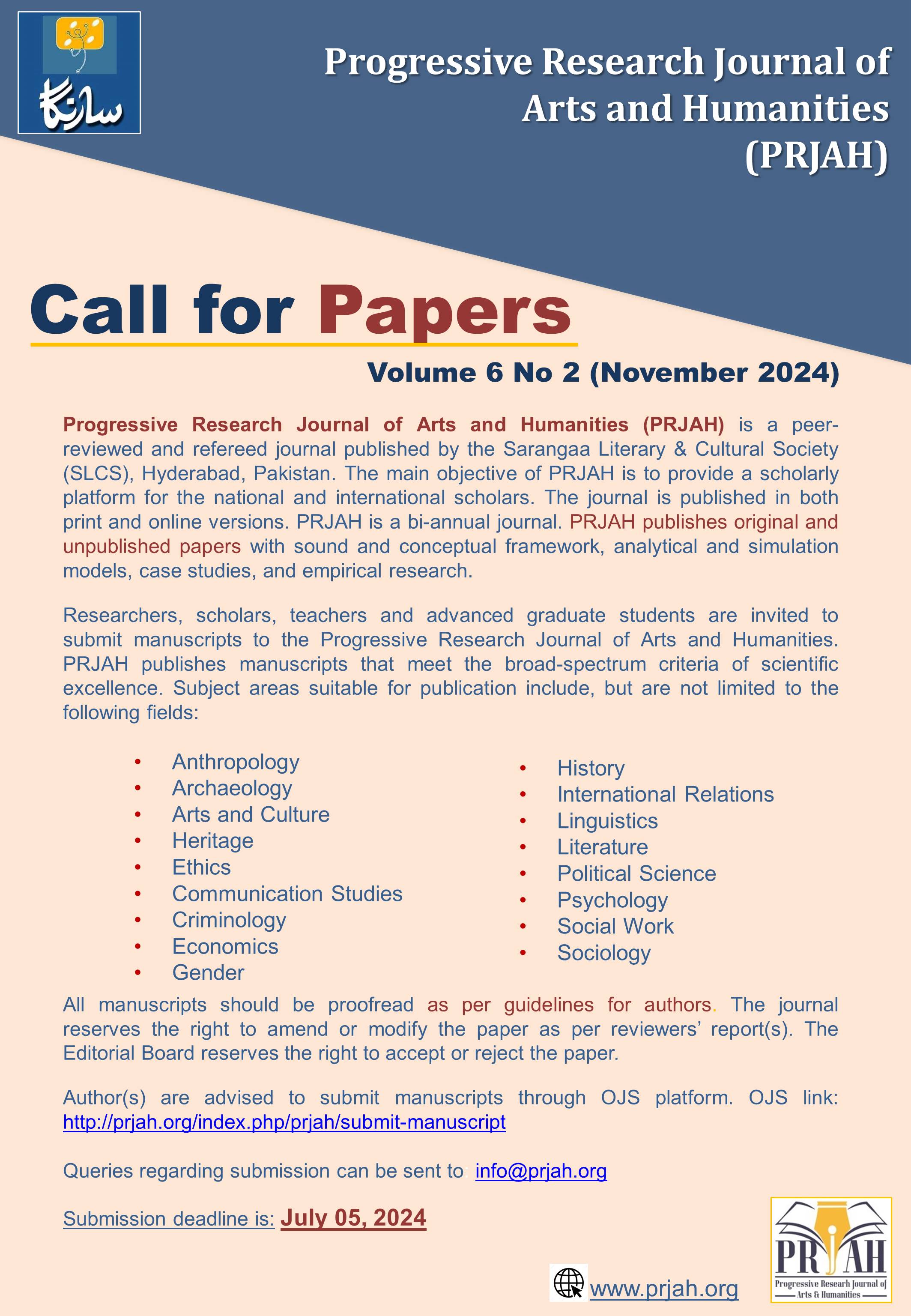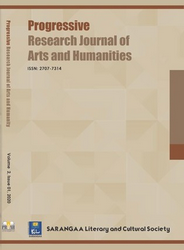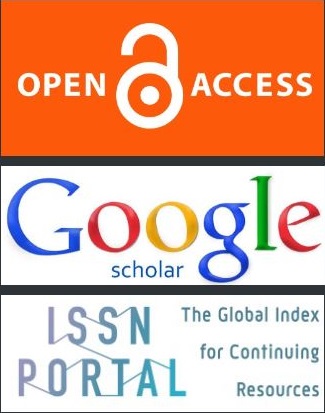Political Economy of Resource Allocation in Balochistan: Assessing the Role of Government Policies and Bureaucratic Mechanisms
DOI:
https://doi.org/10.51872/prjah.vol6.Iss1.296Keywords:
Political Economy; Development Budget; Distribution of Resources; Bureaucracy; Balochistan.Abstract
Paper critically evaluates the political economy of resources distribution in Balochistan by using a balanced panel approach from 2008-09 to 2018-19. The study has been conducted to highlight the key causes of irregular distribution of development funds in Balochistan and find out their serious implications for people in general. To get the authentic and validated results, a rich dataset has been obtained from the various sources of Government of Balochistan, non-governmental organizations and federal agencies. The results of the study reveal that political groups and top-level bureaucracy influence resource allocations during the course of budget making process. Politicians and other top bureaucracies keep their own interests in mind and divert public resources to develop their own districts. The districts which are poor in socio-economic indicators, are supposed to be allocated more funds but they are ignored. The study has tried to answer the question that what factors are involved in the proper distribution of provincial funds and how to address the issue. However, the study reveals that there is a serious influential impact of senior ministers of cabinets who have always dominated the provincial development funds which ultimately result in the enhanced poverty ratio, and backwardness in other districts of Balochistan which lack proper and influential representatives.
References
Ahmed, M. (2023). Political Economy of Discretionary Allocation of Annual Development Programmes: Theory and Evidence from Balochistan. The Pakistan Development Review, 167-198.
Ahmed, M. (2023). Political Economy of Elite Capture and Clientelism in Public Resource Distribution: Theory and Evidence from Balochistan, Pakistan. India Quarterly, 79(2), 223-243.
Ahmed, M., & Baloch, A. (2015). Political Economy of Balochistan, Pakistan: A Critical Review. European Scientific Journal, 11(14).
Ahmed, M., & Baloch, A. (2017). The political economy of development: A critical assessment of Balochistan, Pakistan.
Ali, S., Zakir, M. H., Arif, M., & Hammad, S. (2023). The CPEC-Sovereignty Dilemma Between Prosperity And Autonomy: An Exploratory Study. Pakistan Islamicus (An International Journal of Islamic & Social Sciences), 3(2), 442-459.
Grare, F. (2013). Balochistan. South Asia.
Ismail, M. (2014). Geostrategic Importance of Balochistan: Baloch Insurgency and the Global Politics of Energy Resources. Journal of Political Studies, 21, 181-201.
Javaid, P. D. U., & Jahangir, J. (2020). Balochistan: a key factor in global politics. South Asian Studies, 30(2).
Javed, S. A., & Ahmed, V. (2019). NFC award: devising formula for horizontal distribution. Working Paper. Sustainable Development Policy Institute.
Malkani, M. S., Mahmood, Z., Shaikh, S. I., & Arif, S. J. (2017). Mineral resources of Balochistan province, Pakistan. Geological Survey of Pakistan, Information Release, 1001, 1-43.
Mohammed, J., & Farooq, S. U. (2002). The role of public sector in the economic development of Balochistan. The Dialogue, 3(4), 472-494.
Mushtaq, M., & Mirza, Z. (2021). Understanding the Nexus Between Horizontal Inequalities, Ethno-Political Conflict and Political Participation: A Case Study of Balochistan. Ethnopolitics, 21, 221 - 237.
Rana, A. W., Moeen, M. S., Shikoh, S. H., & Davies, S. (2021). Proposed Balochistan agriculture policy 2021. Intl Food Policy Res Inst.
Samad, Y. (2014). Understanding the insurgency in Balochistan. Commonwealth & Comparative Politics, 52, 293 - 320.
Samad, Y. (2015). Understanding the insurgency in Balochistan 1. In State and Nation-Building in Pakistan (pp. 118-145). Routledge.
Sandano, AI. (2014).Separatist Movement of Balochistan: A Non Traditional Security Threat, LAP LAMBERT Academic Publishing.
Shaikh, P. A., Ahmed, M., Yousaf, H., & Ahmed, J. (2020). The determinants of poverty: A case study of district Lasbela, Balochistan, Pakistan. International Journal of Advanced Science and Technology, 29(7), 9688-9700.
Siddiqui, K. S. (2023). Security of the China Pakistan Economic Corridor (CPEC): Counterinsurgency in Balochistan. Taylor & Francis.
Downloads
Published
How to Cite
Issue
Section
License
Copyright (c) 2024 Progressive Research Journal of Arts & Humanities (PRJAH)

This work is licensed under a Creative Commons Attribution 4.0 International License.






